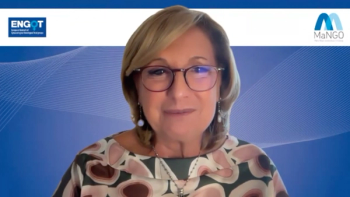
Dr Patricia Salber Discusses the Growing Unaffordability of Drug Prices
While the implementation of the ACA helped to manage healthcare costs in the beginning, Patricia Salber, MD, MBA, of The Doctor Weighs In, said that there are just certain factors that will always make dealing with growing costs very difficult.
While the implementation of the Affordable Care Act (ACA) helped to manage healthcare costs in the beginning, Patricia Salber, MD, MBA, of The Doctor Weighs In, said that there are just certain factors that will always make dealing with growing costs very difficult.
Transcript (slightly modified)
How should the US address the growing unaffordability of drug prices?
Well first I think people forget that we have an insurance cycle and that healthcare costs escalate and then they get really high and then they fall because people react to that and they go up and down and up and down. So we’ve had a few years that coincided with the implementation of the ACA where it looked like healthcare costs were at least moderated somewhat and now we’re seeing an escalation again.
And, I think until we get to some of the fundamental issues that are related to what drives healthcare costs and that is, how do we truly keep a population healthy? How do we make sure that we’re paying for the services fairly, not just ratcheting it down so people are working hard for not much money because people won’t go into those positions anymore, but then I think we’re having, as I mentioned on the panel [at the ACO & Emerging Healthcare Delivery Coalition Spring Live Meeting], some things coming down the pipe that are going to be difficult to deal with.
—m
—
And I know the answer to that. And that’s the development of these new, very effective targeted therapies that are hugely expensive. They were expensive to develop. They’re being marketed at prices that can be $80,000, $100,000 a year and yet in some cases they are if not curative, they’ve changed what used to be a deadly diseaseelanoma, for example, or lung cancer, for exampleinto a disease that now has a pretty decent or improved life span. We’re just going to have to deal with that.
Newsletter
Stay ahead of policy, cost, and value—subscribe to AJMC for expert insights at the intersection of clinical care and health economics.













































